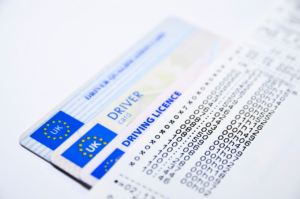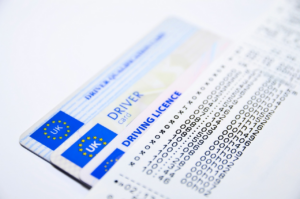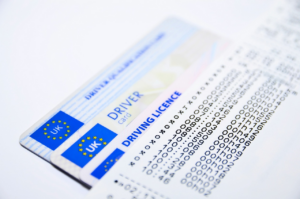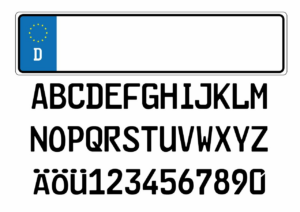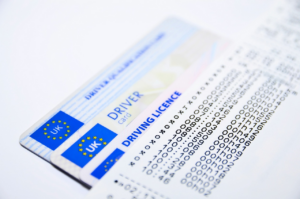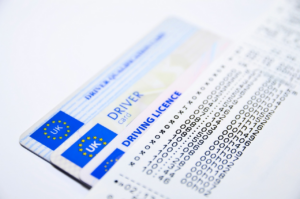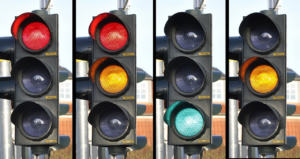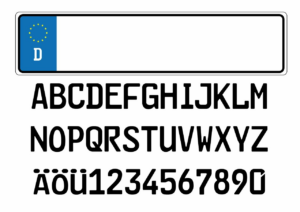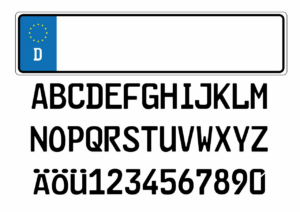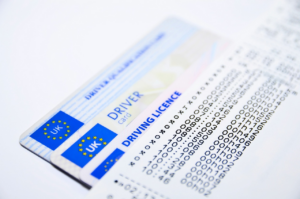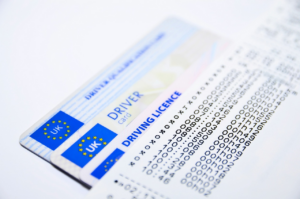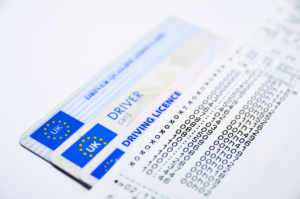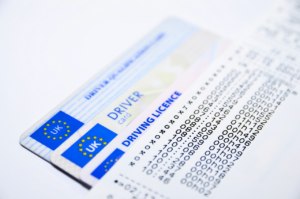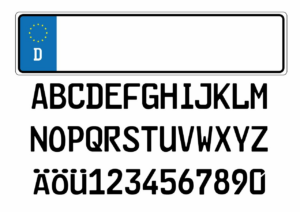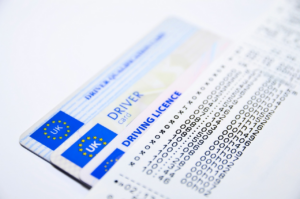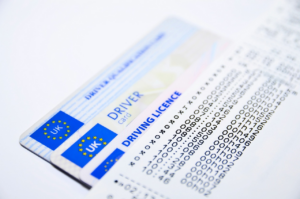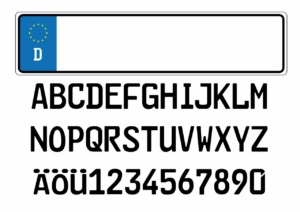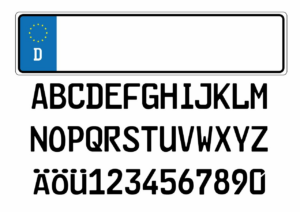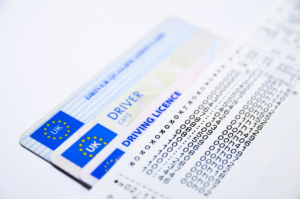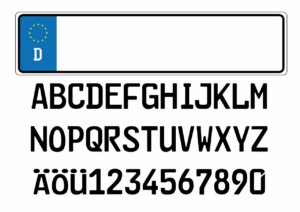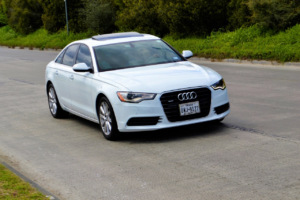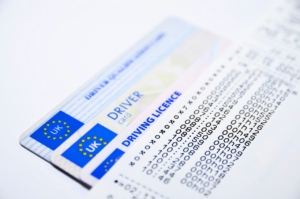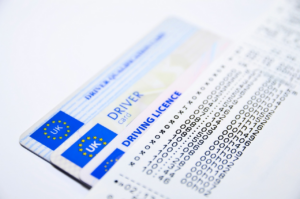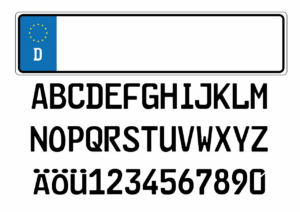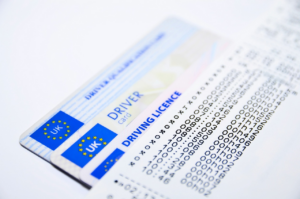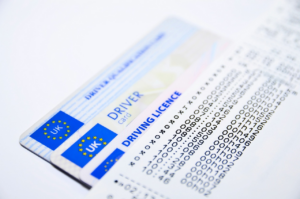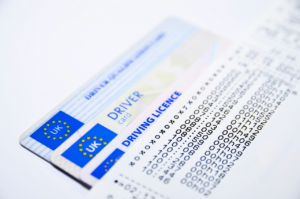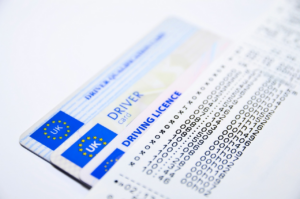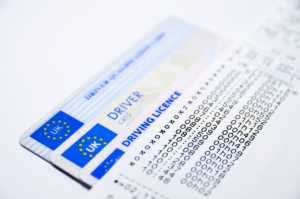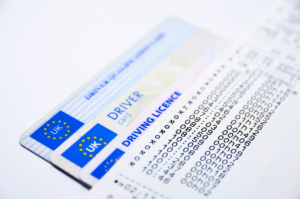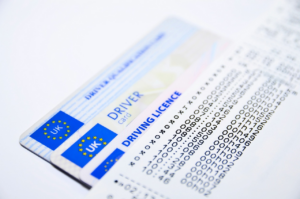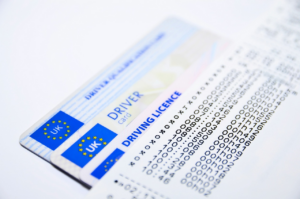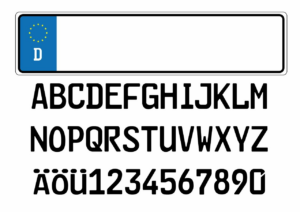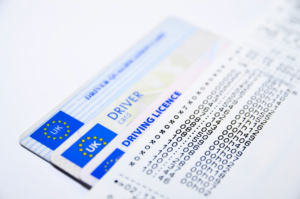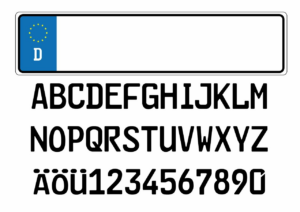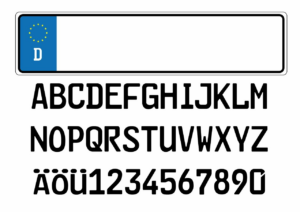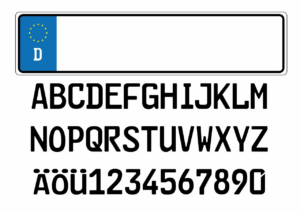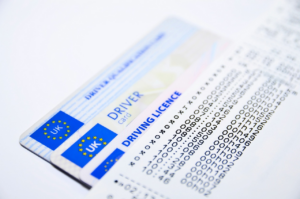Are you planning on obtaining a Qatar driving license? If so, you must be prepared to pass both the theory and practical exams. While both exams are essential for obtaining a Qatar driving license, they differ in terms of the content, format, and difficulty level.
In this article, we will explore the key differences between the theory and practical Qatar driving license exams, as well as provide you with tips on how to prepare for and pass both exams.
Firstly, let’s take a closer look at the Qatar driving license process. To obtain a Qatar driving license, you must first pass a theory exam, which tests your knowledge of traffic rules and regulations in Qatar. Once you pass the theory exam, you will then need to pass a practical exam, which tests your driving skills and ability to apply the rules of the road.
It’s important to note that both exams are mandatory, and you cannot obtain a Qatar driving license without passing both. In the following sections, we will delve deeper into the key differences between the theory and practical exams, as well as provide you with useful preparation strategies and common mistakes to avoid.
Overview of the Qatar Driving License Process
So, you’re ready to embark on the journey of obtaining your Qatar driver’s license. Let’s take a closer look at what you can expect from the process.
Firstly, you will need to attend a mandatory 15-hour driving course at a registered driving school. This course will cover the basics of driving in Qatar, including road signs, traffic laws, and safe driving practices. You will also practice driving on a closed circuit with an instructor to gain confidence behind the wheel.
Once you have completed the driving course, you will need to pass both a theory and practical exam. The theory exam consists of 20 multiple choice questions that cover topics such as road signs and traffic laws. You must answer at least 18 of the questions correctly to pass.
The practical exam will test your driving skills on the road, including your ability to maneuver through traffic, park, and make turns safely. It’s important to note that the practical exam is conducted in a real-world driving situation, so it’s crucial to be comfortable and confident behind the wheel.
The Theory Exam
If you want to pass the Qatar driving exam, you’ll need to know the rules of the road like the back of your hand. The theory exam is the first step towards obtaining your Qatar driving license.
This exam is designed to test your knowledge of road safety rules, traffic regulations, and driving etiquette. The theory exam is conducted in an electronic format and consists of 20 multiple-choice questions. You will have 20 minutes to complete the exam, and you must score at least 12 out of 20 to pass.
The theory exam covers a wide range of topics, including road signs, speed limits, lane discipline, and driving in adverse weather conditions. It is essential to study the Qatar traffic laws and regulations thoroughly before taking the exam. The questions are designed to test your understanding of the rules, and if you’re not well-prepared, you may find the exam difficult.
Once you pass the theory exam, you can move on to the practical driving test, where you’ll be evaluated on your driving skills.
The Practical Exam
When it comes to the practical exam for the Qatari driving license, there are a few key points that you should keep in mind.
First and foremost, it’s important to understand the content and format of the exam, which typically includes a road test and some basic maneuvers.
Additionally, you’ll want to be familiar with the criteria that the examiner will be using to evaluate your performance, so that you can focus on the areas that are most important.
Finally, there are a few tips and tricks that can help you pass the exam, such as practicing your driving skills beforehand and staying calm under pressure.
Content and Format of the Exam
You’ll experience a unique format and content when taking the Qatar driving exam, giving you a comprehensive understanding of driving rules and regulations.
The practical exam consists of two parts: the pre-test inspection and the actual driving test. During the pre-test inspection, you’ll be asked to identify and explain the different car parts, including the brakes, lights, and indicators. This is to ensure that you have a basic understanding of how to operate the vehicle safely.
Once you pass the pre-test inspection, you’ll proceed to the actual driving test. The test is designed to assess your ability to drive safely on the road and observe traffic rules. You’ll be required to drive through different scenarios, such as roundabouts, intersections, and highways, while demonstrating your ability to follow road signs, obey traffic lights, and use signals correctly.
The examiner will also test your ability to perform various maneuvers, such as parallel parking and three-point turns. By the end of the test, you’ll have acquired a solid foundation in driving skills and knowledge, which will prepare you for safe driving in Qatar.
Criteria for Evaluation
The evaluators will be closely observing your driving skills and decision-making abilities to ensure that you’re capable of safely navigating the roads in Qatar. They will assess your ability to follow traffic rules, maintain a safe distance from other vehicles, and make appropriate judgments in different driving scenarios. They will also evaluate your ability to handle the vehicle, including steering, accelerating, braking, and reversing.
To pass the practical driving test, you need to demonstrate that you can drive safely and confidently in different road conditions. The evaluators will be looking for a calm and composed demeanor, and they’ll consider how you handle stress or unexpected situations while driving.
They’ll also assess your awareness of your surroundings, including other vehicles, pedestrians, and road signs. Overall, the practical driving test is a comprehensive evaluation of your driving skills, and it requires not only technical proficiency but also good judgment and awareness.
Tips for Passing the Exam
It’s important to understand what the evaluators are looking for in order to increase your chances of success on the practical driving test.
First, make sure you have a good understanding of the rules of the road and traffic signs. This includes knowing the speed limits, right-of-way rules, and how to handle different road conditions. The evaluator will be watching to see if you’re following these rules and driving safely.
Secondly, practice your driving skills as much as possible. This includes practicing in different weather conditions, at different times of day, and in different types of traffic. The evaluator will be looking to see if you can handle different driving situations confidently and safely.
Additionally, make sure you’re comfortable with the vehicle you’ll be using for the test. Familiarize yourself with the controls, such as the turn signals, brakes, and headlights.
By preparing yourself in these ways, you’ll increase your chances of passing the practical driving test on the first try.
Key Differences Between the Theory and Practical Exams
As you prepare for your Qatar driving exams, it’s important to understand the key differences between the theory and practical portions.
The written or theory exam is a multiple-choice test that assesses your knowledge of traffic rules, road signs, and safe driving practices. The questions are designed to test your understanding of the rules of the road and your ability to apply them in different situations.
On the other hand, the practical driving exam evaluates your ability to apply the knowledge you learned in the theory exam. It’s a hands-on test that assesses your driving skills, including your ability to control the car, park it safely, and follow traffic rules.
During the practical exam, you’ll be required to demonstrate your ability to drive on different types of roads and in different traffic conditions. You’ll be evaluated on your awareness of other drivers and your ability to respond to different situations on the road.
Understanding these differences between the theory and practical exams is crucial to passing your Qatar driving exams.
Preparation Strategies for Both Exams
Now that you’ve got a clear understanding of the key differences between the theory and practical Qatar driving license exams, it’s time to focus on preparation strategies for both tests.
The theory exam requires a good grasp of the rules and regulations of the road, as well as the ability to apply them in various scenarios. To prepare for the theory exam, you should start by studying the Qatar Highway Code and familiarizing yourself with the different road signs and signals. You can also take advantage of online resources, such as practice tests and quizzes, to help reinforce your knowledge and identify areas where you may need to improve.
In addition to studying, it’s important to practice safe driving habits and gain practical experience on the road to prepare for the practical exam. You should aim to get as much practice as possible, whether through driving lessons or by practicing with a licensed driver.
During your practice sessions, focus on mastering the basic driving maneuvers, such as parking, reversing, and changing lanes. It’s also important to develop good observation skills and learn how to anticipate potential hazards on the road.
By combining both theoretical and practical preparation strategies, you can increase your chances of passing both exams and obtaining your Qatar driving license.
Common Mistakes to Avoid
Don’t let avoidable errors ruin your chances of obtaining a Qatar driving license – learn about common mistakes to avoid during both exams.
During the theory exam, one of the most common mistakes is not reading the questions carefully. Many questions are worded in a tricky way, and missing a small detail can lead to choosing the wrong answer. To avoid this, take your time and read each question at least twice before selecting an answer. Also, make sure to understand the meaning of important words, such as ‘prohibited’ or ‘mandatory,’ as they can greatly affect the correct answer.
Another mistake to avoid during the theory exam is not studying the road signs and their meanings thoroughly. The exam includes several questions about road signs, and not knowing the meaning of even one sign can result in a failed exam. To avoid this, use flashcards or study guides to learn the signs and their meanings, and make sure to review them regularly. Additionally, don’t assume that the signs in Qatar are the same as in your home country, as there may be slight differences that could affect your answers.
During the practical exam, one of the most common mistakes is not checking the mirrors and blind spots before making a move. This is especially important when changing lanes, turning, or merging onto another road. Not checking these areas can result in a dangerous situation, and examiners will be looking for this during the test. To avoid this, make sure to check the mirrors and blind spots every time before making a move, and do it slowly and deliberately.
Another mistake to avoid during the practical exam is not following the speed limits and traffic rules. Examiners will be observing your driving closely, and not following the rules can result in a failed exam. To avoid this, make sure to study the traffic rules and speed limits thoroughly before the exam, and follow them closely during the test. Additionally, don’t let nerves or anxiety affect your driving, and remember to stay calm and focused throughout the exam.
Importance of Safe Driving Practices
Safe driving practices are crucial for both personal safety and the safety of others on the road, and should be a top priority for all drivers. While passing your driving test is important, it’s equally important to continue practicing safe driving habits every time you get behind the wheel.
Here are three important safe driving practices to keep in mind:
-
Always wear your seatbelt: This might seem obvious, but it’s worth mentioning. Buckling up can save your life in the event of an accident, and it’s also the law in most countries.
-
Avoid distractions: Distracted driving is a major cause of accidents, and it’s not just limited to texting or talking on the phone. Eating, drinking, adjusting the radio, and even talking to passengers can all be distractions. Keep your focus on the road at all times.
-
Follow the rules of the road: Speed limits, stop signs, and traffic signals are in place for a reason. They help keep everyone on the road safe. Always obey traffic laws and be aware of your surroundings.
By following these safe driving practices, you can help prevent accidents and keep yourself and others safe on the road.
Conclusion: Final Thoughts and Recommendations
It’s important to prioritize safe driving habits to prevent accidents and ensure the safety of yourself and others on the road. This means following traffic rules and regulations, such as wearing seatbelts, obeying speed limits, and avoiding distractions while driving.
It also means being aware of your surroundings and anticipating potential hazards on the road. To ensure safe driving practices, it’s recommended to take a defensive driving course and regularly review traffic laws and regulations.
Additionally, it’s important to maintain your vehicle and ensure it’s in good working condition. By prioritizing safe driving habits, you can not only prevent accidents but also contribute to a safer and more responsible driving culture in Qatar.
Frequently Asked Questions
How long does it take to obtain a Qatar driving license?
To obtain a Qatar driving license, you must first enroll in a driving school and complete a certain number of hours of theoretical and practical training. After completing the training, you need to pass both the theory and practical exams.
The theory exam consists of multiple-choice questions that test your knowledge of traffic rules and regulations. The practical exam evaluates your ability to operate a vehicle on the road, including basic maneuvers such as parking and reversing.
The entire process of obtaining a Qatar driving license can take anywhere from a few weeks to several months, depending on your availability and performance.
Are there any age restrictions for obtaining a Qatar driving license?
If you’re looking to obtain a Qatar driving license, it’s important to know that there are age restrictions in place. Firstly, you must be at least 18 years old to apply for a driving license.
However, if you’re under the age of 21, you’ll need to have held a Qatar ID for at least six months before applying. Additionally, if you’re over the age of 60, you’ll need to provide a medical report from a licensed medical practitioner stating that you’re fit to drive.
It’s important to note that these age restrictions apply to both the theory and practical driving exams, which are the two tests you’ll need to pass in order to obtain your Qatar driving license.
How many attempts are allowed for the theory and practical exams?
When attempting to obtain a Qatar driving license, it’s important to know the number of attempts allowed for both the theory and practical exams.
For the theory exam, you’re allowed three attempts to pass. If you fail all three attempts, you’ll need to take driving lessons before being allowed to retake the exam.
On the other hand, for the practical exam, you’re only allowed two attempts. If you fail both attempts, you’ll need to take more driving lessons and wait six months before being allowed to retake the exam.
It’s important to study and prepare thoroughly for both exams to avoid any delays or extra costs.
Is it possible to switch a foreign driving license to a Qatar driving license?
If you’re looking to switch your foreign driving license to a Qatar driving license, the process is relatively straightforward.
You’ll need to provide a copy of your passport and residence permit, as well as your original driving license and a translation of it into Arabic.
You’ll also need to pass a medical exam and take a driving test, which includes both a theory and practical component.
The theory exam is computer-based and consists of 20 multiple-choice questions, which you must answer correctly in order to pass.
The practical exam involves driving on the road and demonstrating your ability to follow traffic rules and drive safely.
While the process can take some time and effort, it’s certainly possible to switch your foreign driving license to a Qatar driving license if you meet the necessary requirements.
What documents are required for obtaining a Qatar driving license?
To obtain a Qatar driving license, you need to provide a copy of your passport, a valid residency permit, a no objection certificate from your sponsor, and a letter from your embassy confirming your license validity.
You’ll also need to pass a medical examination and attend the mandatory driving theory course, which can be taken in English or Arabic. The theory exam consists of multiple-choice questions on road rules, signs, and safety regulations.
Once you pass the theory exam, you can book your practical driving test, which includes a road test and a parking test. The road test assesses your ability to drive safely and follow road rules, while the parking test evaluates your parking skills.
Passing both the theory and practical exams is essential to obtain a Qatar driving license.
Conclusion
In conclusion, obtaining a Qatar driving license requires passing both a theory and practical exam. There are key differences between the two exams, including the format, content, and level of difficulty.
While the theory exam evaluates your knowledge of traffic rules and regulations, the practical exam tests your ability to apply that knowledge on the road.
To prepare for both exams, it’s important to study the traffic laws and practice driving skills regularly. Avoid common mistakes such as speeding, failing to use turn signals, and not checking blind spots.
Remember that safe driving practices are crucial not only for passing the exams, but also for ensuring the safety of yourself and others on the road. By following these strategies, you can increase your chances of passing both the theory and practical exams and obtaining a Qatar driving license.




